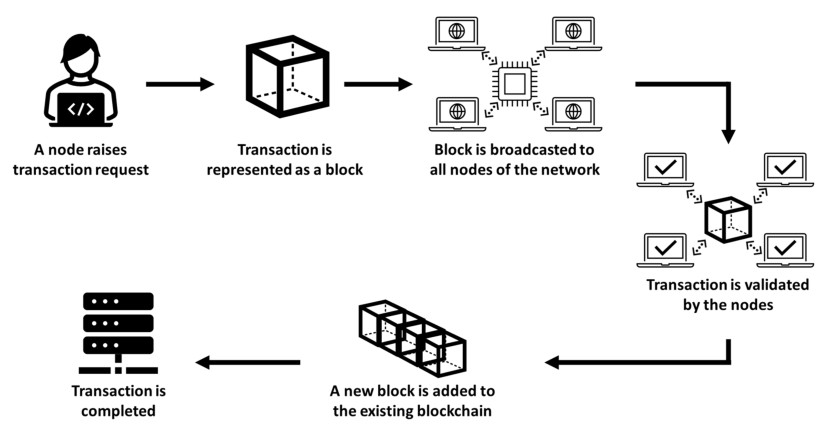Imagine living in a virtual environment where billions of people can interact with one another, learn, shop, and have a comfortable life on their couches.
The computer displays we use today to access the global information web have evolved into portals to a 3D virtual world that is tactile like real life, but better and bigger. Avatars are digital versions of us that freely transition between experiences while carrying our identities and money. Despite the excitement, this is the so-called metaverse, and it doesn’t exist at the moment.
Metaverse Short History

A single, shared, immersive, persistent, 3D virtual realm where people can experience life in ways they couldn’t in the real world is what many in the computer industry call the “metaverse.”
While some of the technologies that made it possible to access this virtual world, such as augmented reality (AR) glasses and virtual reality (VR) headsets, are evolving quickly, other crucial components of the metaverse, such as adequate bandwidth or interoperability standards, are probably years away from becoming a reality or may never become one.
The idea is not brand-new: While work on the technologies that support an internet based on virtual reality has been ongoing for decades, novelist Neal Stephenson first used the word He used the term “metaverse” in his 1992 science fiction book Snow Crash.
Why is the Metaverse Important?
When Facebook changed its corporate name to Meta in October 2021 and declared plans to invest at least $10 billion in the idea that year, “Metaverse” became a household term. Along with Meta, other major technology players including Google, Microsoft, Nvidia, and Qualcomm are investing billions of dollars in the idea. The metaverse economy may reach $5 trillion by 2030, according to optimistic predictions made by management consulting firm McKinsey & Company. With gaming, entertainment, education, and marketing in the metaverse all likely to grow in importance, e-commerce is predicted to be the dominant engine.
Uncritical enthusiasm for the metaverse and profound skepticism about how it will play out has led to some criticism. Industry observers have questioned whether or not the metaverse would ultimately differ significantly from the digital experiences we have today, or if it does, whether or not the general public will be eager to spend hours each day in a headset navigating virtual space.
However, other futurists contend that although the metaverse is still in its infancy and has critical technical obstacles to overcome, it will eventually materialize. It will also arrive hugely.
In his article “History of the metaverse explained,” TechTarget writer George Lawton quoted Dave Wright, chief innovation officer at IT service provider ServiceNow, as saying that it was one of the most eagerly awaited technological developments of the upcoming decade.
How Does Metaverse Work?
There is minimal consensus over how the metaverse will operate because it is yet primarily unbuilt.
However, the metaverse can be broadly defined as a digital ecosystem based on multiple 3D technologies, real-time collaboration software, and decentralized finance tools based on blockchain technology.
The success of the metaverse will depend on elements like the level of interconnection between virtual worlds, data portability, governance, and user interfaces.
- The metaverse is still used by consumers for gaming and entertainment, but it is still a long way from being an immersive virtual reality.
- Large rival ecosystems, such as the meta worlds for Apple and Android, dominate the metaverse and have little interoperability.
- The metaverse is a 3D version of the internet that is dynamic, open, and interoperable.
Final Thoughts
The creation of a metaverse by technology corporations to supplement or enhance peoples’ digital and physical experiences has generated a lot of excitement around the concept of the metaverse.
A persistent, decentralized, collaborative, and interoperable set of opportunities and business models will eventually be made available via metaverse, enabling enterprises to expand their digital companies. However, there are already new prospects in the metaverse for both businesses and people. For instance:
- J.P. Morgan is the first bank to have a presence in the metaverse; it estimates a $1 trillion market opportunity and is interested in virtual real estate.
- Automobile dealerships might have a limited supply of a given model of car on hand while utilizing spatial computing, in particular the AR cloud, to appear to alter inside and exterior characteristics digitally in real time to display more possibilities.
- Games can be developed to teach staff members how to manage risks without really putting them in danger.
- Customers can connect with DToCs and digital humans to help with financial transactions, concierge shopping experiences, or patient health monitoring.
- Organizations can improve employee engagement, collaboration, and connection opportunities by implementing virtual workspaces. (Virtual meetings supported by technologies from the metaverse are already a common occurrence in hybrid work.)



